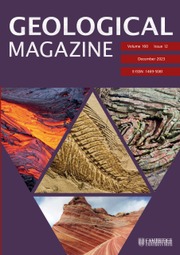Article contents
The Grain-size Factor in Classification of Igneous Rocks
Published online by Cambridge University Press: 01 May 2009
Extract
Although two years have passed since the British Association Committee on Rock Nomenclature and Classification reported in favour of using grain-size as an important factor inclassification, very few petrologists have accepted the Committee's invitation to discussand criticize the suggested scheme. This silence may be taken to mean consent; but in some quarters the older scheme, based on mode of occurrence of the rocks, still finds favour. It is instructive to inquire how far it is correct to speak of the scheme as new. Actually one does not have to dig deeply into petrological literature to realize that the principle of grain-size classification has been advocated for many years; indeed, it was the guidmg principle in some of the earliest scientific attempts at rock classification, notably in the well-known scheme elaborated in his Lehrbuch der Petrographie by Ferdinand Zirkel in 1866 and 1893–4. The reactionagainst the complete subordination of mode of occurrence found expression in the second edition of Rosenbusch's Mikro-skopische Physiographie (1887), in which the igneous rocks were divided into (1) deep-seated rocks, (2) dyke rocks, and (3) effusive rocks, each of these main categories being subdivided in terms of mineral content. In quite recent times A. Johannsen (1931)
Information
- Type
- Original Articles
- Information
- Copyright
- Copyright © Cambridge University Press 1938
References
page 417 note 1 Geol. Mag., LXXVIII, 1936, 319.Google Scholar
page 417 note 2 Descriptive Petrology of the Igneous Rocks, i, 1931 (Chicago).Google Scholar
page 418 note 1 Excluding the basaltic glass, Tachylyte (or tachylite), which even the most enthusiastic advocate of the scheme would hesitate to group as “Dolerite” though most of it is “Hypabyssal”.Google Scholar
page 422 note 1 For the numerical limits between the grain-size groups, see the report in Gbol. Mag., LXXVIII, 1936, 319.Google Scholar
- 1
- Cited by

